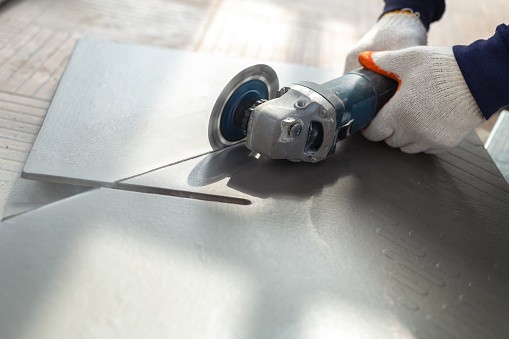Metal is often used for security purposes such as locks and bolts, yet is still vulnerable from tools such as cutters. A newly designed material called Proteus is unique not for its strength, but its resistance to cutting tools.
For thousands of years, people have stored sacred or important possessions in protected places with locks, safes, and vaults made from strong metals. However, cutting tools could still damage and break these metals.
Proteus, on the other hand, is designed to actively fight back against cutting tools since it is a "manufactured non-cuttable material." Its European designers said that the new material rapidly wears down tools trying to cut the proteus, even high-speed cutting wheels.
Combing aluminum and ceramic creates the new artificial material that can be used to create various products from bike locks to protective clothing. Aluminum is a soft, flexible, and light metal that the inventors embedded with ceramic spheres.
Proteus
The researchers, who published their study in the Nature Research journal, described that Proteus cannot be cut by drills, angle grinders, or high-pressure water jets. "When cut with an angle grinder or drill, the interlocking vibrational connection created by the ceramic spheres inside the casing blunts the cutting disc or drill bit. The ceramics also fragment into fine particles, which fill the cellular structure of the material and harden as the speed of the cutting tool is increased."
Named after the Greek god of shape-shifting, cutting the material was compared to cutting "jelly filled with nuggets." When a tool cuts through the aluminum, the ceramic spheres create vibrations which deteriorate the cutting tool--even if it's a powerful drill.
With water jet cutting, the ceramic spheres spread out the water which reduces its power to slice through Proteus. The team also shares its inspiration from nature. Some of the natural defenses include mollusk shells, the skin of grapefruit, and fish scales that can withstand piranha attacks.
"We were intrigued by how the cellular structure of the grapefruit and the tiled structure of mollusk shells can prevent damage to the fruit or the creatures inside, despite being made of relatively weak organic building blocks," said Dr. Stefan Szyniszewski from Durham Univerisity in England. His team studied several natural structures as the working principle for their metallic-ceramic creation.
Read Also: A Natural Water Repellent Nanostructure Is Found on Insects

Attack Mechanism
Miranda Anderson from the University of Stirling, UK, was amazed by their discovery. "It actually destroys the cutting blade through the sideways jerky vibrations that it creates, or it widens the water jet's spray."
The tiny ceramic particles act like sandpaper. Anderson describes, "So the attack mechanism causes the material to become more resistant to the attack." An angle grinder can cut protective steel armor in less than one minute but was no match to Proteus.
Anderson compares the unique Proteus to the strength and durability of diamonds. Of course, the manufactured material is a lot cheaper and more practical. If mass-produced, manufacturers would have no problem sourcing aluminum and ceramic.
Dr. Szyniszewski said, "This material could have lots of useful and exciting applications in the security and safety industries. In fact, we are not aware of any other manufactured non-cuttable material in existence as of now."
Read Also: Materials Engineers Successfully Developed First-Ever Transforming Metal
© 2025 ScienceTimes.com All rights reserved. Do not reproduce without permission. The window to the world of Science Times.












